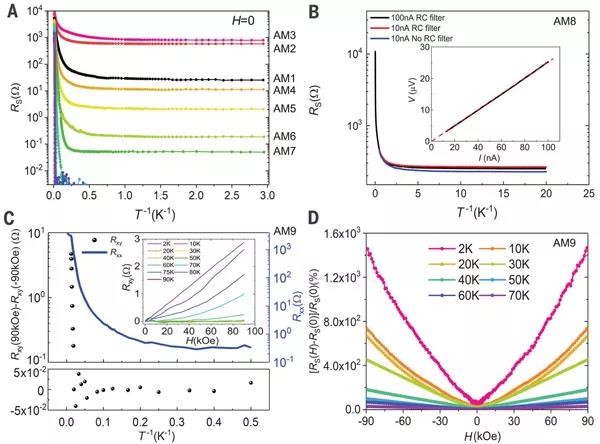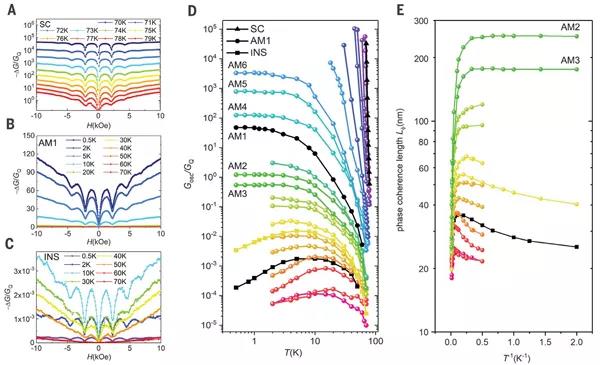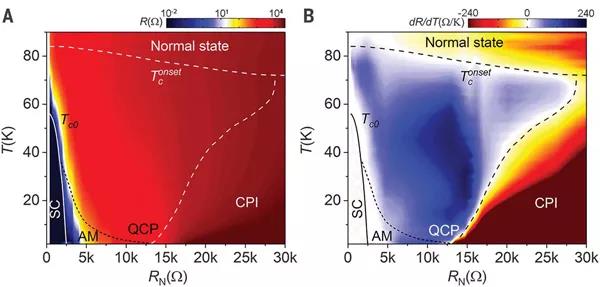Science Quantum Coherence Today: Intermediate Boson Metal State in Superconductor-Insulator Transition
QQ Academic Group: 1092348845
Detailed
【introduction】
In a two-dimensional (2D) disordered system, the metal state at zero temperature is missing due to quantum interference. Consistently, when electrons form a Cooper pair in a 2D disordered system, the ground state should be a superconductor or insulator. Nevertheless, near zero temperature, an abnormal metal state was observed experimentally, and it exhibited a residual resistance much lower than the quantum resistance at low temperatures. The existence and origin of this unexpected metal state has caused intense debate. Under ultra-low temperature conditions, the abnormal resistance saturation characteristics of metals in 2D superconductors were experimentally observed. However, external influences such as noise and carrier overheating may also disrupt the coherence of superconductors, which makes people doubt the existence of 2D metal ground states in superconducting systems. Coherence is the key to understanding 2D metal states. If the coherence length of the electron is saturated at low temperature, due to the weakening of the constructive quantum interference, the diffusion should not be absolutely prohibited, resulting in the possible metal state in low-dimensional electronic systems. Therefore, it is important to study the coherence of Cooper pairs in the abnormal metal states of 2D superconductors.
[Achievement Profile]
Today, under the leadership of Associate Professor Wang Jian of Peking University, James M. Valles Jr. of Brown University, and Xiong Jie of Chengdu University of Electronic Science and Technology (co-corresponding author), the Collaborative Innovation Center with Quantum Material Science, University of Chinese Academy of Sciences, Beijing Quantum Information The Academy of Sciences, Tsinghua University, and Beijing Normal University have collaborated to study how quantum coherence can be formed between superconductor-metal-insulator transitions through permeance quantum oscillation in high-temperature superconducting films with nanophase patterns. Coherence is adjusted by changing the etch time of the film. Between the superconducting and insulating states, a strong dielectric anomalous metal state was detected, which is characterized by saturation resistance and oscillation amplitude at low temperatures. The measurement results show that the anomalous metal state is a boson, and coherent saturation plays an important role in its formation. Related results were published in Science under the title "Intermediate bosonic metallic state in the superconductor-insulator transition".
[Picture and text guide]
Fig.1 Superconductor-abnormal metal-insulator transitions in nanopore-modulated YBCO films

Figure 2 Characteristics of abnormal metal states

Figure 3 Evolution of coherence through QPT Cooper

Figure 4 Phase diagram of disordered tuned QPT in nano-temperature superconductors

Literature link: Intermediate bosonic metallic state in the superconductor-insulator transition (Science, 2019, DOI: 10.1126 / science.aax5798)
This article is contributed by Mu Wentao.
Source: WeChat public account-material sourceFigureFigure
- Previous: Adv. Energy Mater .: N
- Next: 1


 About us
About us